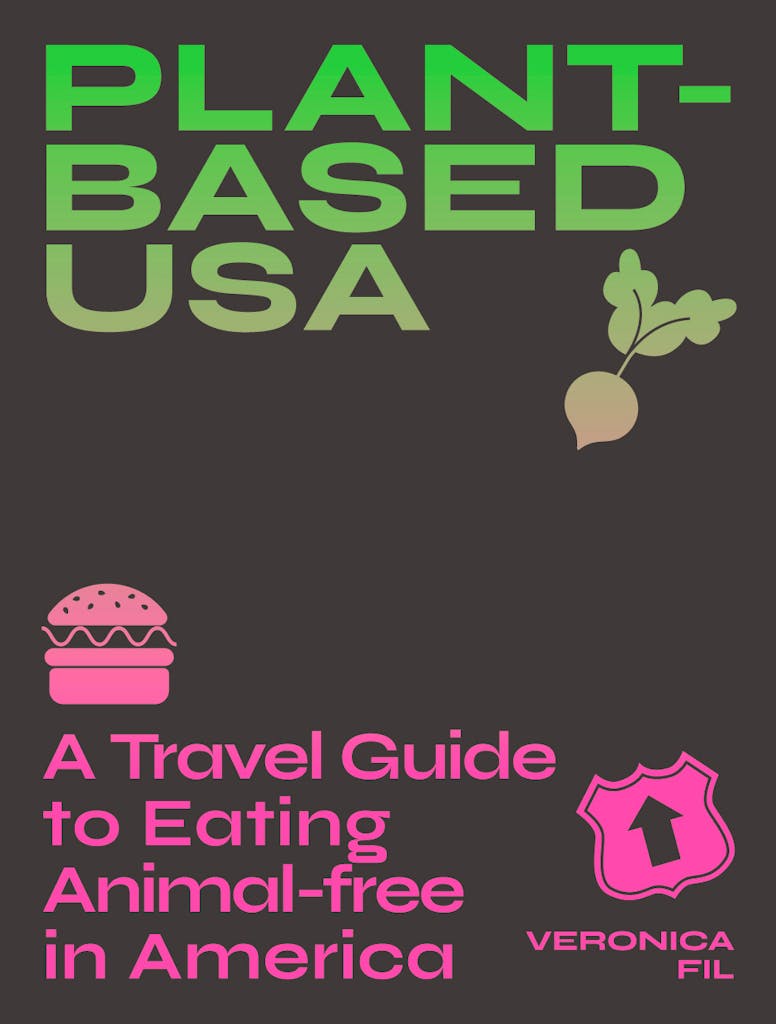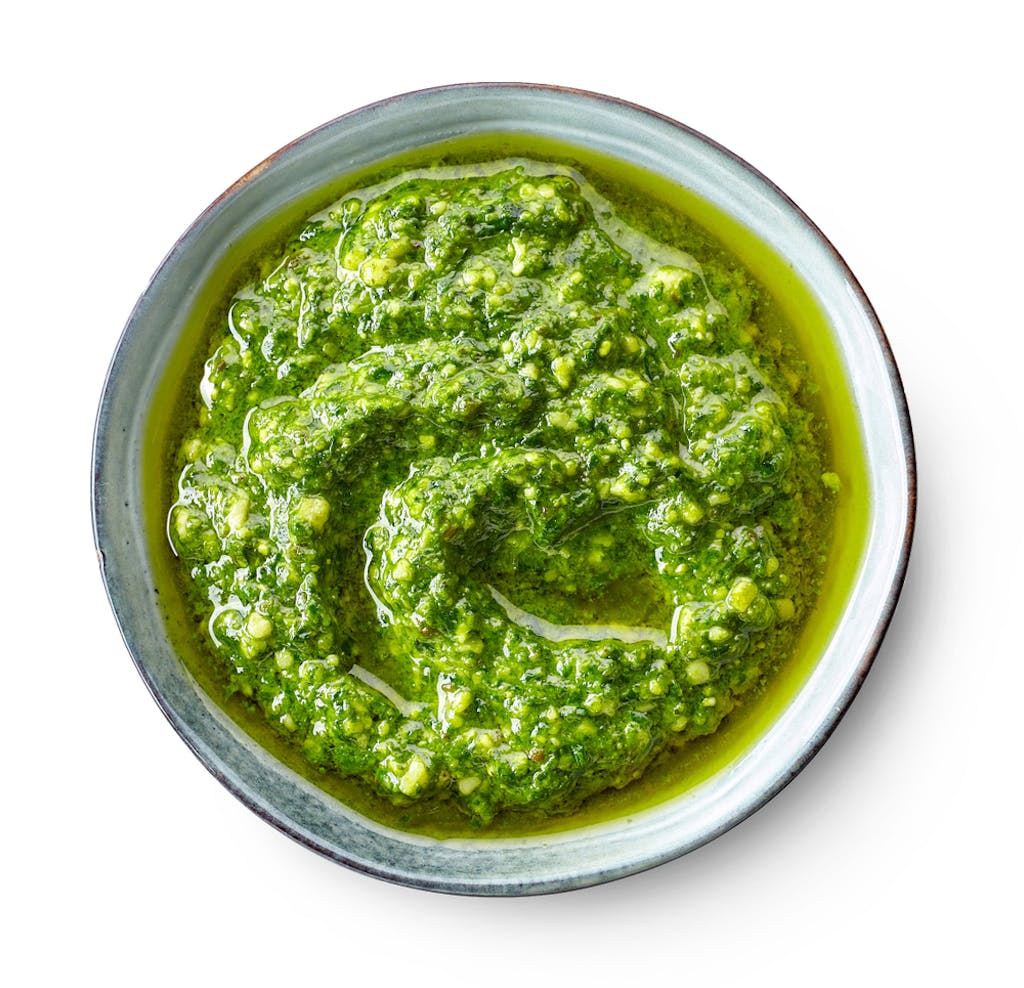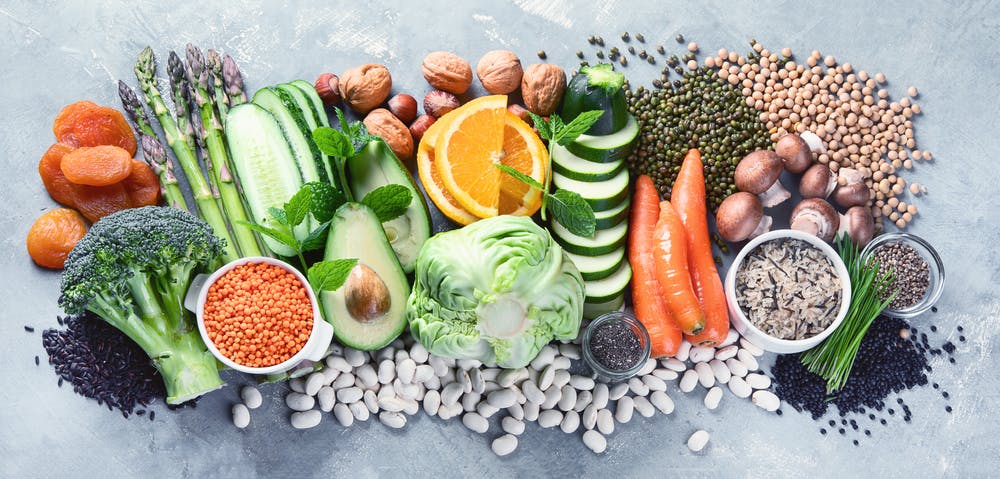Cookbook Author Veronica Fil on Why Plant-Based Dining is Here to Stay
Cookbook author Veronica Fil arrived in America with a future-thinking foodie’s dream: to launch a successful plant-based cheese company. Her timing was incredible.
Fil left Melbourne, Australia, with her chef-husband Shaun Quade to start Grounded Foods in Los Angeles. The company makes non-dairy cheeses with cauliflower and hemp, inspired by the fine-dining recipes Quade created for a vegan cheese course at his former restaurant.
Then the pandemic hit, stirring up a hunger for healthy and sustainable eating options like never before. Fil listened to her appetite and embarked on a plant-based dining journey to find out what people were cooking, eating and growing in 18 cities across America.

Plant-Based USA: A Travel Guide to Eating Animal-Free in America, records her encounters with restaurants, food trucks, mom-and-pop eateries and green markets. Best of all, Fil shares some of the most prized recipes for plant-based cooking.
“It became less about romping through restaurants and discovering the best in plant-based cuisine,” she wrote. “Instead, I wanted to focus on the people who are pushing the future of food forward and building a system that no longer relies on animal consumption. It’s about the founders, chefs, entrepreneurs and brands that are all committed to change.”
As Fil’s book reveals, plant-based dining has come a long way since the early days, when California-based chef Matthew Kenney was one of the first and only culinary leaders to champion its beauty, versatility and health benefits. Raw and plant-based foods, often labeled “vegan” and “animal-free,” have become more widely available and the menus reflect this transformational boom of creativity — even on the high seas.
Silver Nova’s plant-based menu was a Silversea first

While all ships in the Silversea fleet can accommodate requests for plant-based dining, 2023’s Silver Nova was the first to feature an elaborate plant-based program, showcasing the highest quality ingredients and latest culinary techniques, thanks to a collaboration with French Master Chef Jean Luc Rabanel.
Emotion and taste form the core of Rabanel’s culinary philosophy, which he calls “greenstronomy.” Plants, vegetables, roots, leaves, flowers and wild herbs hold the leading role in his creations, with animal products of meat, dairy and eggs left out. These ingredients are often better for the environment and can be helpful in preventing chronic diseases, boosting the immune system and improving overall health.
“From beetroot, quinoa, to artichoke — It’s not always about tofu!” said Chef Anne-Mari Cornelius, Silversea’s fleet traveling executive chef, who trained with Chef Rabanel. “It’s amazing what you can do with vegetables, from purée to sponge, a dust, a gel, just to enhance the flavor and modernize the dish.”

Silversea has also expanded its plant-based approach to the bar, Patrick Fourtanet, Silversea’s director of food and beverage, tells us. “Mocktails are another thing guests are asking us for, because they’re used to going everywhere. The ingredients you can work with include vegan cheese, oat and soy milks.”
Silversea’s culinary team is expanding the plant-based program to additional vessels. And that, Cornelius tells me, is because “guest feedback shows us that plant-based dining is no longer a trend, but a more inclusive way of life.”
Curious to know more about plant-based dining? The National Institutes of Health says a “plant-based diet consists of all minimally processed fruits, vegetables, whole grains, legumes, nuts and seeds, herbs and spices and excludes all animal products, including red meat, poultry, fish, eggs and dairy products.” Silversea caught up with Veronica Fil to learn about where plant-based eating is headed, her favorite fine-dining spots and chefs, and her tips for enjoying a plant-based lifestyle while traveling.
Your book pushes forward like a road trip with stops across the USA. What did you notice about plant-based eating across the country when you wrote this?
When we started, two weeks later Covid happened. Restaurants shut down, and we freaked out for a minute, because I didn’t know where to start, and nothing was open. At that moment, half of those restaurants would never reopen, so we had to put it on pause for nearly two years, as things started changing. The big thing I noticed is because of Covid, the uptake of plant-based foods really accelerated. People started thinking more about their health and well-being, and a health scare can often do that.

And how did plant-based foods and dining become the focus of your life?
I’m actually not from a food background; I used to be a behavior economist. Then I married a fine dining chef, and that was the beginning for me. We started working together and then went on to create a marketing agency that focused on food and beverage brands, because personally, I’m obsessed with food.
I don’t understand people who eat to live, I’m a live-to-eat person. After years of doing boring government work, I wanted to work on something I loved being around. We started working together in a restaurant. At that time, we saw trends in what people were eating. A lot of customers were requesting allergen-free and a lot of alterations, like gluten-free, dairy-free and vegan options, even though we weren’t a vegan restaurant.
At the same time, with my marketing clients, I observed this huge swing towards plant-based products as brands like Oatly were starting to gain traction. I noticed no one was doing cheese at the time in a way that was in any way edible. So I mentioned it to my partner Shaun, and lo and behold, he started experimenting with cheeses made from hemp. He made it part of a cheese course at the end of the meal. After hundreds of diners, no one realized the cheese was made from hemp — not dairy — and when he told me, the light switch went on, and I thought, we should leave the restaurant and double-down. Within a few weeks, we obtained some venture capital and moved to the U.S.
That’s amazing. What were some of the tastiest plant-based dishes you discovered in your book?
I personally get pumped by dishes that use plants or veggies in ways that I’d never tried before. Burgers and pizzas are fine, and they certainly have their place, but if I see something that’s novel or out of the ordinary, I’ll always choose that option! Dirt Candy (New York) is great for this; it presents simple vegetables in such an artistic, innovative way that is infinitely more exciting than a plate of steak and chips. Dirt Candy has one dish called the ‘Tower of Terroir,’ which is a deconstructed salad served on a tiered stand. The lettuce is soup, and the vegetables are shaped like lollipops.
On the more casual side, I also enjoyed the dishes at Somebody People (Denver). It’s a wine bar that does vegetable-forward, simple but elegant dishes and they don’t rely on faux meats for flavor. The gnocchi with yam, carrot berbere [spice], chermoula [relish] and radish is great.
Your book has James Beard-nominated chefs and low-profile local favorites. What were some of the sleuthing techniques you used to discover these plant-based talents?
Word of mouth, contacting people I knew in every state, particularly through the plant-based community. People are always happy to give recommendations of what to eat. So we learned through that network, through startup communities and companies working in the space, and through other chefs working in the space.
Of all the chefs and cooks devoted to plant-based cuisine, who stood out and why? What about their culinary ideas and recipes are worth paying attention to?
When we left Australia back in 2019, the plant-based dining scene was very limited. Shaun, was hell-bent on creating an extraordinary vegan tasting menu at our restaurant (formerly Lume). The goal was to make it so interesting and innovative that non-vegan diners would order it — which is exactly what happened.
To this day, I’m in awe of his ability to create foods that make me completely forget that meat and dairy exist. He’s less of a chef now and more into the food science side of things — particularly around fermentation and hemp proteins — but remains equally creative in his thinking.
In the U.S., again, I really like Chef Amanda Cohen from Dirt Candy as I mentioned, because she makes vegetables genuinely exciting. I like Tara Punzone from Pura Vita (LA), because she’s taken traditional Italian cuisine and modernized it in a way that flexitarians like me don’t notice the meat missing. It’s just as satisfying. And I like Jewan Manuel (aka Plant Based Papi), who’s made vegan street food cool. He does pop ups that are notorious for selling out, and more recently took up a kitchen residency at Fortune nightclub in Portland.
Many folks became aware of veggies in fine dining thanks to New York City Chef Daniel Humm. Which fine dining veggie-forward restaurants did you include in your book?
For fine dining, apart from Dirt Candy, I also recommend Vedge in Philadelphia, again because it’s focusing on what makes vegetables unique and delicious (rather than mimicking meat). And there’s Freya in Detroit, which is an intimate 12-table, tasting menu-only restaurant that’s ridiculously affordable.
What should people be mindful of when going plant-based? For example, some people talk about ‘clean’ eating. Can you elaborate on what this means?
The most important words for me would be inclusiveness and accessibility. Although I want to see a shift away from animal-based proteins — more from a sustainability perspective — it’s easy to forget that not everybody has access to fresh, high-quality plant-based foods. And there are other factors, such as community and cultural tradition, that influence the way people eat.

I get really upset when I see plant-based or vegan foods marketed in a way that’s somewhat elitist or judgmental, or makes people feel ashamed of their own diets. Regarding ‘clean’ eating, I like to avoid unnecessary additives and ingredients — and I have a lot of respect for food brands that make an effort to do this, too. But you know, I’m a normal person so you won’t find me following the Gwyneth Paltrow eating plan anytime soon.
In your opinion, is plant-based eating healthier than a diet with meat?
I think there’s a correlation between people conscientiously eating plant-based foods and taking care of what they’re putting in their bodies. That said, plant-based foods on the whole aren’t healthier, in my opinion.
I’m not vegan, but I’m not sure we can feed the population the way we have with the food supply chain going the way it currently is. And from a sustainability perspective, introducing more plant-based options is extremely important. On the whole, in terms of ingredients and nutrition profile, it’s no different. There are healthy and unhealthy options in other proteins, too. Personally, I think people should stop eating processed food as a general rule.
For folks who like to eat seasonally and locally, but live in tough winter climates, what are some ways they, too, can still eat consciously and stick to plants?
I’m of the opinion that eating locally and eating sustainably does not always go hand-in-hand. For example, the resources required to grow certain crops in California may be extremely inefficient compared to another region — and while local, it ultimately leads to more environmental mileage. But as an everyday consumer, it’s really hard to trace the footsteps your food has taken, and there’s a serious lack of transparency around that anyway.

Who are some of the top innovators of plant-based cuisine that people should follow for nutrition tips, cooking techniques and general insights?
Practically speaking, I like to embrace my freezer to ensure that nothing goes to waste and that I have my favorite seasonal ingredients available year-round! I buy in comical bulk, then prep/chop my veggies and keep them in Ziplock bags in the freezer for months. Same goes for herbs; in summer we have loads of basil and parsley and no way to use it all up, so I’ll make pesto or herb butters. If I find any sad veggies at the back of the fridge, they’re taking on a new life as a pickle or chutney.
I get a lot of insight into what’s new from following the food-tech/alternative protein startup community; FoodHack (@foodhackglobal on Instagram) is a great one to check out; it’s got a newsletter with all the latest developments around the world.
You are very attuned to the challenges of the food supply chain and the barriers to fresh produce. That being said, what regions in the U.S. and Australia seem to be on the cutting edge of creating an exciting plant-based offering from restaurants to supermarkets?
Like anywhere in the world, the most populated areas and major cities are always going to receive better access to fresh foods. Given the high cost of logistics and infrastructure required to transport, warehouse and manufacture food, it simply makes more economic sense to consolidate things in markets like New York or Chicago. So we see this imbalance between wealthier cities and less affluent ones — to the point where food deserts exist, where people cannot easily obtain fresh or nutritious food. As you’d expect, this trickles down to restaurant trends as well; talented chefs will naturally gravitate towards cities where the tools of their trade — fresh produce and cutting-edge ingredients — is abundant, so it’s much easier to find plant-based dining options in those larger cities which I’ve covered in my book. I hope that we can change this unfortunate aspect of the food system over time, because we’re missing out on so much.
Ready to savor plant-based cuisine? Discover the complex flavors of the wide selection of plant-based menu items offered on board Silver Nova, Silver Ray and other Silversea ships.



















